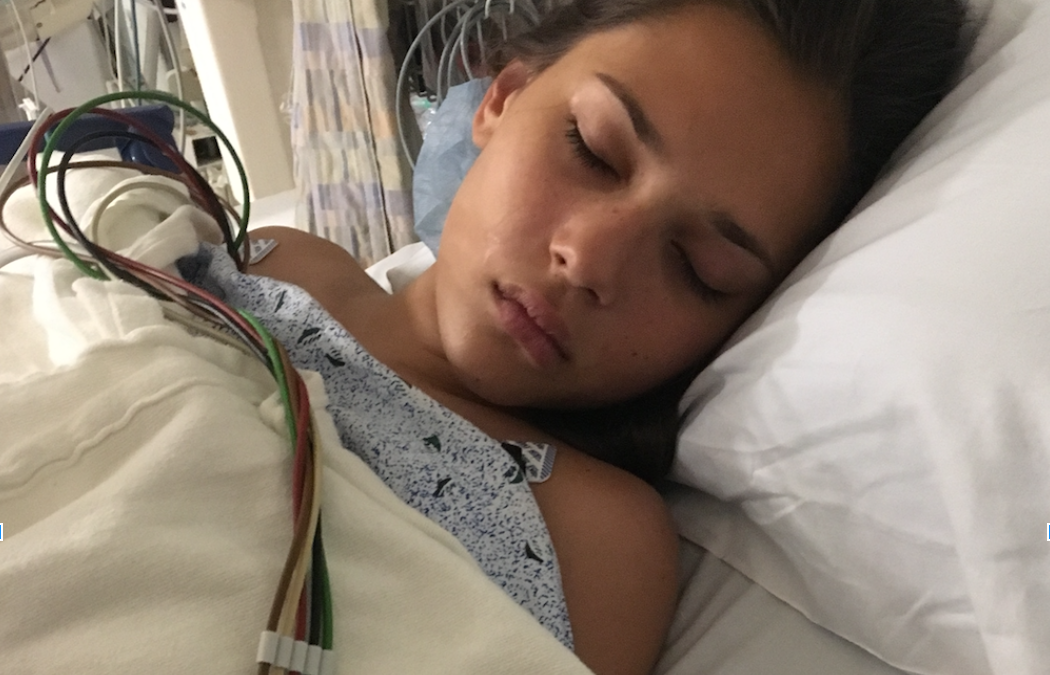
Nov 17, 2018 | Featured, Summer Experiences
By Lauren Drzala ’21
July 23, 2018 will be a day I will always remember. After finishing my lunch for the day, I began to feel sharp pains in my stomach and immediately thought – “this is very unusual for me.” Hours passed and the pain just kept getting worse. I was becoming desperate and anxiety crept in, so naturally, I turned to Google for some reliable advice on a homemade remedy. Long story short, the apple cider vinegar nor the lemon juice with ginger did my stomach any justice. I decided to call a friend, willing to try anything. She said that her mom usually gave her warm milk with turmeric. Immediately, I was a bit hesitant because I had no idea what turmeric would taste like. Looking back on it, I should have listened to my first instinct while I was chugging down a glass of that concoction. When I thought all hope was lost, I swallowed my pride and went to the people that I should have gone to in the very beginning: my parents. My dad gave me two Motrin and told me to wait. Nothing happened. My mom didn’t even believe that there was anything wrong with me, thinking I made the pain up. As I was counting down the hours to the never-ending day, my sister Emma approached my room, thinking she could give me some insight. “Hey Lauren, where is the pain, because it might be appendicitis.” I angrily responded, “Go away, Emma. It’s not appendicitis. It isn’t that bad.” Something actually being wrong with me was the last thing on my mind. In the end, I decided the best thing to do was to go to sleep and wait for the pain to subside.
At 2 a.m., I woke up to what felt like someone stabbing me in the stomach. Immediately, I went to my parents, knowing that there something was terribly wrong. My dad, as any physician would do, asked me to describe the pain and its location. I pointed to my lower left abdomen. My mom suggested appendicitis, remarking that she had had it around my age. Once she said this, I was reminded of Emma’s earlier comment. I could just hear her saying that she was right over and over again in my head. We soon rushed to the hospital and waited until I was admitted to a room. The pain was in full force, as if there was a war going on in my stomach. Finally, the drugs that the nurse gave me kicked in. I was starting to feel a little better, and thought that this was all a mistake and that there was nothing wrong with me. After many hours of testing, nothing showed up – that is, until they tried a CAT scan.
Once the scan was complete, the nurse came back and said that it was, in fact, appendicitis. Sighing in dismay, I decided to accept my fate and prepared for the surgery. I was not on the list of surgeries that day so I did not know when I could get this little monster out of me. So, I decided to get comfortable and watch TV for the remainder of the time. I mainly enjoyed HGTV, talking to my mom about how the couples chose the wrong house. I do not think that she was as invested as I was, after seeing the concern on her face. Finally, the doctors came in and wheeled me into the operating room.
The doctors began to give me anesthesia. In about 10 seconds, I was out like a light. I woke up being wheeled back to my room and being set on my bed. “It’s over,” I thought. Wrong. The remainder of the night consisted of doctors coming in and out of my room every single hour, checking my heart beat and asking me how I was feeling. I can certainly say that that was the worst sleep I have ever had. The following morning the doctors finally said I could go home and told me that I couldn’t do any physical activity for a while. The next few weeks consisted of me lounging around, hunching down on my stomach so it wouldn’t hurt, and watching movie after movie, including the whole Harry Potter series. I think that we can all agree that Dolores Umbridge, the “Lady in Pink,” was a far worse threat to Harry Potter than Voldemort. Fast forward to August, and I was finally starting to feel like myself again. I wish that I could say that, at the end, I learned more about myself or that I am a changed person, but I am not. I am still the same Lauren, just minus an appendix.
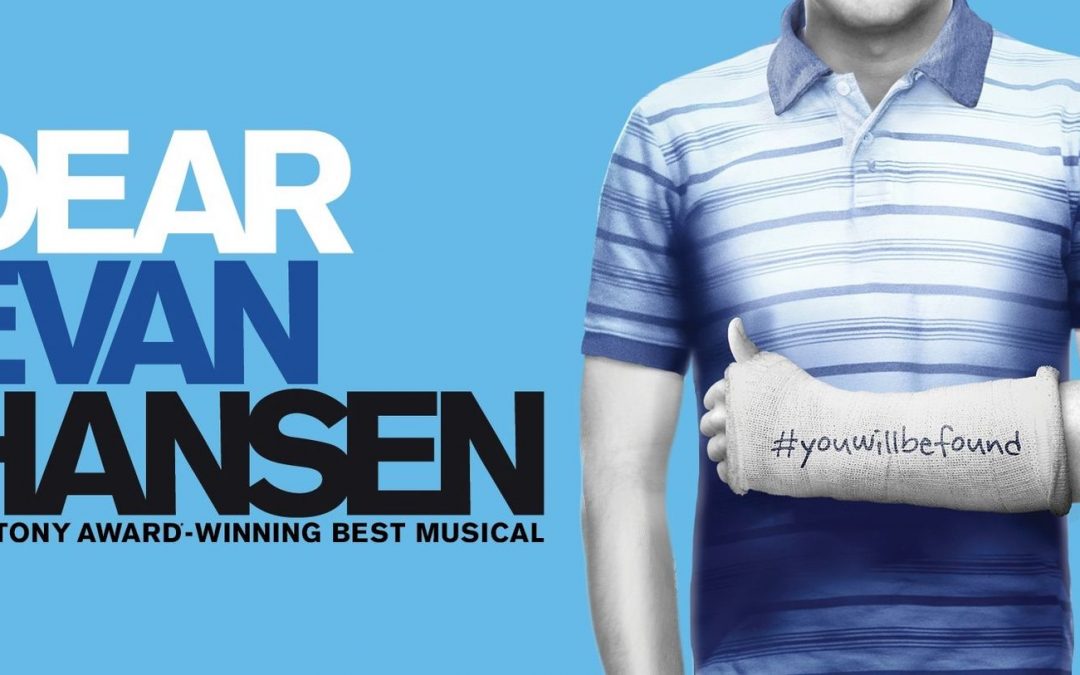
Nov 13, 2018 | Featured, Meghan Durkin, Movies, School News, School Trips
By Zara Jacob ’21
The class of 2021 eased into their sophomore year with a trip to New York City, exploring exhibits in the Museum of Natural History and and seeing the Tony Award-winning “Best Musical,” Dear Evan Hansen.
With not a single textbook or laptop in hand, the grade split up onto four buses and headed on a 90-minute ride to the city. After reaching the museum, they were divided by advisories, perusing the various exhibits at the museum. Unlike previous years, when a scavenger hunt was assigned, the students had the freedom to pick which exhibits they wanted to visit with their advisories. Many of the students appreciated this change; Meghan Durkin (IV) explained, “I enjoyed the museum more than I anticipated because I got to see exhibits that I thought were interesting, as opposed to a plan created by our advisors.” From fossils to dioramas filled with cavemen, the first segment of the trip maintained a good balance of fun and education.
After eating lunch in the museum, the students made their way back to the buses and headed to the theater. Despite a slight accidental detour, all 150 sophomores eventually made it to the correct theater, where they watched the 2 o’clock showing of Dear Evan Hansen. As the students crowded up the stairs, many stopped for snacks, waiting anxiously for the musical to begin.
Dear Evan Hansen tackles themes of bullying, loneliness, and suicide — daunting topics that many teenagers face today. Sanjana Biswas (IV) said, “The musical was relevant to the modern times we live in, and the portrayal of social media and its platform was very accurate.”
The musical begins with showing two teenage boys who struggle with depression and anxiety. Evan, the protagonist of the musical, desperately seeks to step out of the shadows and be noticed. We see Evan’s yearning for true care and appreciation through the passionate performance of his song, “Waving Through a Window.” His mother, juggling school and work, struggles to be there for Evan, and his therapist suggests he write letters to himself to help his self-confidence (hence the name Dear Evan Hansen). The other teenage boy, Connor Murphy, is briefly introduced to the audience before committing suicide.
Through a series of unfortunate events, one of Evan’s letters to himself, which discusses his troubling thoughts and anxieties, is with Connor on the day he commits suicide, and is misconstrued as Connor’s last words being addressed to Evan. Stuck in an impossible situation, Evan hopes for everything to blow over, but ends up meeting with Connor’s family almost every day and pretends to have known Connor as a best friend. All of Evan’s dreams begin to come true – he lands the girl of his dreams, feels the warmth of a loving, present family, and becomes famous on social media. To know how Evan fares throughout the rest of the musical, you will have to go and see it. From the actors to the captivating music, it is no wonder that Dear Evan Hansen has won so many awards.
After the show, the sophomores headed back to Pingry, their first day of school having come to an end.
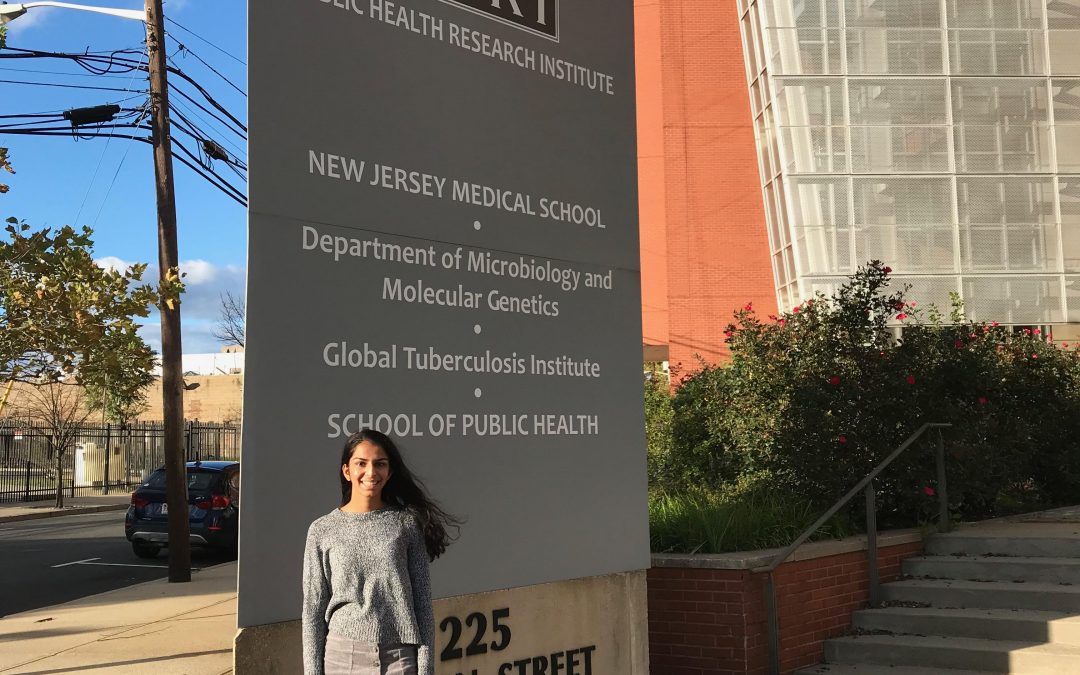
Nov 13, 2018 | Featured, Summer Experiences
By Anjali Kapoor ’20
I’ve always wanted to follow in my uncle’s footsteps and become a doctor. My uncle is an orthopedic surgeon with his own hospital in India and I was always mesmerized by the dozens of patients and doctors swarming the halls. While I knew that I liked and excelled in biology, and it’s always been my childhood dream to study medicine, I didn’t exactly know what being a doctor entailed. This summer, I set out to learn more about the field – I was going to conduct hands-on research and shadow doctors.
For the first half of the summer, I worked in Dr. Pandey’s lab at Rutgers University researching Hepatitis C. Hepatitis C is a viral infection that causes liver inflammation and is spread through contaminated blood. It is the leading cause for hepatocellular carcinoma, a common form of liver cancer. While vaccines exist for the related diseases Hepatitis A and B, there is no existing vaccine for Hepatitis C. In particular, Dr. Pandey’s lab was looking at the Fuse Binding Protein 1 (FBP1) and its interaction with the p53 tumor suppressor gene, an important gene that regulates the cell cycle. In previous research, Dr. Pandey found that the FBP1 inhibits the p53 gene by binding to some part of its DNA sequence and, when p53 is inhibited, the likelihood that a cancerous tumor forms increases. Based on that research, we were trying to determine the exact portion of the DNA sequence of the p53 gene that FBP1 binds to. Dr. Pandey’s plan to solve this consisted of cutting the DNA sequence into many different pieces and testing each piece to see if it would bind to FBP1, slowly narrowing the DNA sequence to find the exact base pairs that were binding to FBP1. My role in this project was preparing and testing one of these pieces of DNA to see if it would bind to FBP1. This involved cell cultures, transformations, restriction digests, and the polymerase chain reaction (PCR) technique. While I was not able to see the project through to completion, his doctoral candidates will continue the project and Dr. Pandey hopes to publish a paper on this research by November.
For the second half of the summer, I shadowed three different types of doctors: a general/vascular surgeon, a dermatologist, and a plastic surgeon. It was really interesting to learn about the three different careers, and from the doctor’s perspective rather than the patient’s. When I shadowed the general/vascular surgeon, I saw generally older patients with varicose veins, hernias, and gallstones. I learned about vein stripping procedures, angioplasties, and colonoscopies – it’s amazing how so many of these procedures can be done robotically! Next, I shadowed a dermatologist for a few days and saw people of all ages with dozens of skin issues ranging from common acne to severe skin cancers. I also was able to watch multiple skin cancer surgeries (I definitely learned the importance of sunscreen!) and got to cut my first stitch. He also showed me cosmetic procedures such as how to inject botox and fillers, along with how a new machine trims fat. Lastly, I shadowed a plastic surgeon who focuses on hand reconstructions. I saw many people who had sliced their hand or gotten it stuck in a door and required surgery. All three doctors were very encouraging and gave me advice on how to choose a field and pursue medicine.
Overall, both research and shadowing were great experiences that helped me gain exposure into the world of biology and medicine. It was especially interesting as I got to see both sides of medicine: the scientists doing the early cell research and the doctors treating the diseases based on what the scientists find. While it’s clear becoming a doctor will take many years of studying, learning more about the field and their day-to-day lives has only strengthened my resolve to someday join their profession!
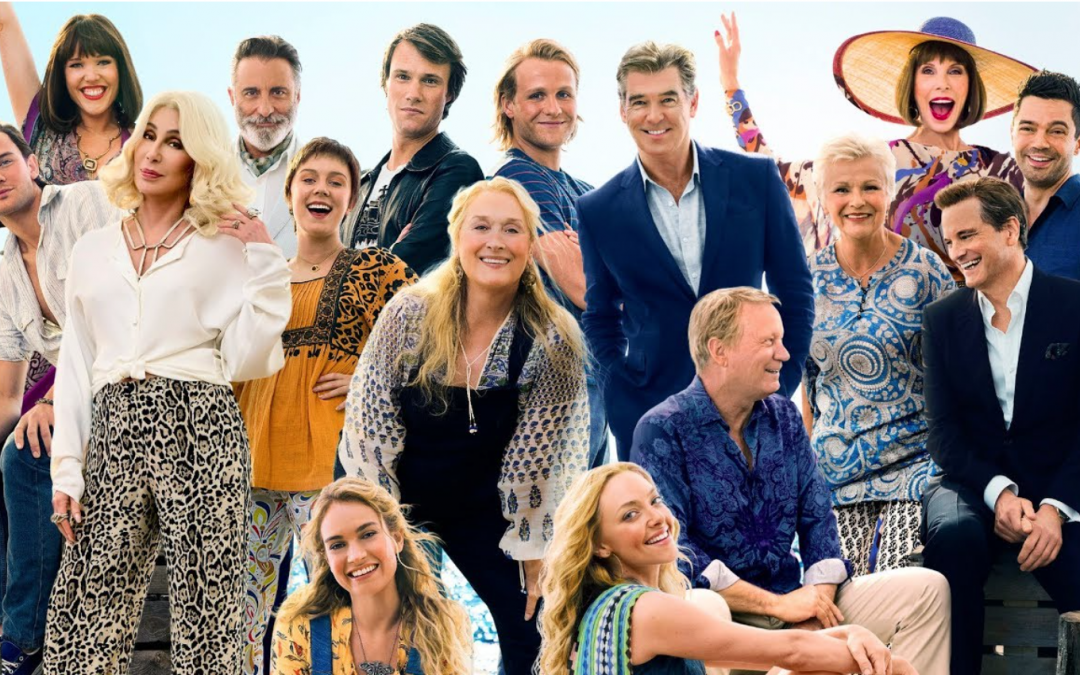
Nov 13, 2018 | Columns, Movies, Summer Experiences
By Martha Lewand ’20
Ever since the movie Mamma Mia was released, fans (including myself) have been anxiously waiting for a sequel. Ten highly-anticipated years later, Mamma Mia 2: Here We Go Again! is finally here! Directed by Ol Parker, the film had my friends and I singing joyously and dancing out of our seats in the movie theater.
The movie includes two concurring storylines, one of young Donna Sheridan (played by Lily James) and the other of her daughter Sophie Sheridan (Amanda Seyfreid) in current times. Circa late 1970s, young Donna has just graduated from university and is eager for adventure. The story details how she meets young Bill (Josh Dylan), Harry (Hugh Skinner), and Sam (Jeremy Irvine) trekking through Europe and ultimately makes her way to the Greek island of Kalokairi. In present day, Sophie grapples with her mother’s (Meryl Streep) recent death, the responsibility of reopening the hotel her mother started, relationship troubles with her husband Sky (Dominic Cooper), and an impending storm potentially preventing her two fathers, Harry (Colin Firth) and Bill (Stellan Skarsgard), from attending the reopening.
No doubt, the best part of the film is the musical numbers. Covers of songs from the first movie are beautifully sung with their own twists while still respecting the original versions. Classics such as “Dancing Queen,” “Mamma Mia,” and, most notably, “Waterloo” all come to life again under the new direction. In the first version, the ABBA tune “Waterloo” was played during the closing credits as the cast danced and sang along. In the sequel, the song is revised in a scene that takes place in a local Parisian cafe with young Donna and Harry. The song is performed in an elaborate fashion, with berets, baguettes, cartwheeling waiters, and French Revolution-esque costumes stealing the show. The corniness of the new “Waterloo” adds an amusing, engaging charm the older version did not possess.
While acknowledging the musical foundation of the first film, Mamma Mia 2 is able to create new songs that fit seamlessly in the plot and are remarkably catchy. When young Donna graduates from college, she performs “When I Kissed the Teacher,” a song that represents the provocative, audacious, and spunky side of Donna’s character to which we are just being introduced. Lily James superbly embodies young Donna’s free spirit throughout her quality vocal performances.
To offer a point of criticism, although I respect Ol Parker’s decision to take on the massive plot, the constant back and forth between time periods is confusing to follow at times. With that being said, however, what I admire most about Mamma Mia 2 is its goal to not attempt to recreate the plot and success of the first movie. For example, most people disagree with the inclusion of Meryl Streep-as-Donna’s death and argue that the exclusion of the actress hurts the movie. But after viewing the film, I conclude that it was a shrewd decision. Even though it was risky to remove an icon like Meryl Streep, the entire movie pays homage to her; the retelling and glorification of Donna’s life story is the most prominent and sentimental element of the whole movie.
The amazing collaboration of the new and old casts, catchy music, and a complex plot with twists and turns throughout make Mamma Mia 2 a hit. If you are ever in the mood to dance and sing along to some classic, uplifting tunes, I strongly recommend seeing Mamma Mia 2 as soon as possible.
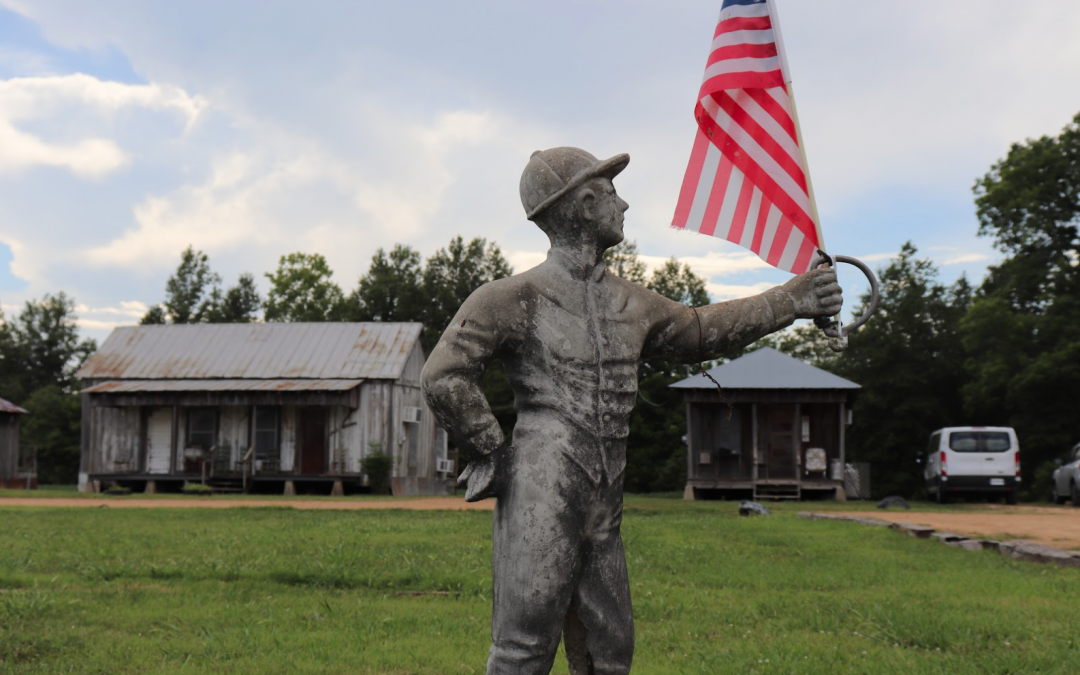
Nov 12, 2018 | Featured, Summer Experiences
By Allie Matthias ’19
On the Fourth of July, I paddled up the Mississippi River as part of a New York Times Student Journey. The late afternoon sun-baked the canoe as sweat dripped down my back. My heart pounded, my eyes stung from melted sunscreen, and my arms began to feel like jelly as we pushed against the current. Isaac, the curly-haired leader of our canoe, sat in front of me while the rest of our group, a diverse mix of boys and girls from all across the country, sat behind me with their paddles ready. Isaac began paddling and the rest of us followed, trying to coordinate with his movements. Everyone grew tired as we reached the Arkansas border and some took a rest. Thinking, “this is good practice for the upcoming tennis season,” I kept pushing forward, but my arms grew heavier and heavier as more and more of my friends stopped paddling. I trusted myself to keep moving, but we needed everyone to propel us forward. On this journey, we examined social justice, specifically racial injustices, in the American South. We explored heavy issues that required us to be honest and vulnerable to broaden our understandings of each other. Canoeing was like having one of our conversations. We all had to work together to push forward into new ideas or new states of mind. Whitney, our group leader, suggested that we sing together to make the ride a little easier to endure. So, we joined together, paddling and singing Sweet Caroline in unison as we drifted towards a little island in the middle of the Mississippi. We trusted each other to give all our effort to paddling, and, in those moments, I was able to let myself go.
For me, this summer was the summer of exploring the United States and my role as a U.S. citizen. I witnessed both the beautiful and the ugly of this country by beginning and ending my summer in national parks and traveling through the South in between.
I began my summer with a family road trip through Appalachia, where I drove through the Blue Ridge Mountains, hiked Shenandoah National Park and the Smoky Mountains, and stayed at the majestic and eery Greenbrier resort in West Virginia. This was a part of the country that I’ve never been to before; the farthest south I had previously traveled in the U.S. was Florida (which barely counts as Southern). In West Virginia, I saw the embrace of Southern white tradition in the over-patterned and well-groomed Greenbrier, a monolith of golf courses and sweet tea. In Eastern Tennessee, I biked through a town ravaged with confederate flags and trucks. Yet, on the other side of all of this was the physical beauty of the Smoky Mountains that pulsed with both an intricate ecosystem of animals and enthusiastic environmentalists.
I ventured deeper into the South with the New York Times to dive into the racial injustices and the culture that was derived from it. From New Orleans to Clarksdale, Mississippi, I saw how there is great diversity and art pulsating throughout, from the blues music to theater groups. At the same time, in every city we ventured through, history was knocking. We visited the lynching memorial in Montgomery, walked across the Edmund Pettus Bridge in Selma, and toured a plantation that memorialized slave lives in Louisiana. There is so much to learn about the South, not just from physical buildings, but from people too, as they are the ones who lived through these stories.
I ended my survey of the U.S. in the Pacific Northwest, taking a ferry through the San Juan Islands and hiking in North Cascades and Olympic National Park. With my senior year closing in, I felt thankful for this breath of fresh air in an environment so distinct from New Jersey.
More than anything, my summer revealed the duality of this country, from the arts and culture to the racism and discrimination. In each state I traveled through, I considered how there has been so much progress, but there is still so much more to do. Most of all, I learned about myself as an American, what it means, and my identity in this country.
Nov 11, 2018 | Featured, Summer Experiences
By Caroline Santoro ’19
The first time I met my boss, he was accompanied by a swarm of Secret Service agents, and I was wearing a bright red bathing suit. Given my reputation as the “ethics girl,” people react pretty strongly when they hear that for the past two summers, I have worked as a lifeguard for President Trump at the Trump National Golf Club in Bedminster. Some people are fascinated by my brushes with celebrities, eager to know what Melania orders for lunch or whether I ever had to rescue Barron from the pool. Others are critical or supportive of my job based on their political views. With these reactions, whether shaming or praising me, I feel guilty because I am not trying to make a political statement through my employment. I feel obligated to make excuses, noting that it just happens to be the closest pool at which I could work or that I applied for the job in September before he was elected. From my many hours on the lifeguard stand, I have gotten a glimpse into the Trumps’ private lives and gained a much more complex understanding of them and myself.
On my first day of work, I was pushing an unwieldy bin of dirty towels when dozens of men in suits came rushing into the pool area, talking frantically into their earpieces. All of a sudden, in strolled the President in his golf whites, greeting me and asking how I was doing. I was freaking out. Here was the President of the United States, much taller and less orange than I anticipated. Seeing him there, removed from his place on the global stage, he seemed like nothing more than the owner of the club. Sure, there were security checkpoints and Secret Service agents everywhere, but greeting me, he was just a boss making sure that everything ran smoothly.
Ivanka Trump and Jared Kushner spend many days at their cottage on the property by the pool. If you didn’t recognize them, you wouldn’t think they are different from any other family. Ivanka is just a mom, chasing her kids around the pool in a bathing suit and coverup, and Jared is just a dad on a lounge chair, throwing his daughter rings to retrieve in the water. After a year full of news regarding Mr. Kushner’s role in the 2016 election, I have many misgivings about his political choices. However, I still appreciate that he greets me every morning, eagerly asks my opinion on the club sunscreen selection, and thanks all of the lifeguards at the end of each day.
The best part of my experience at Trump National Golf Club has undeniably been my interaction with the Secret Service. All I had known about these men and women was that in eleven seconds they could shoot down a plane in the no-fly zone around the golf course. Quite frankly, I thought of them as robots, trained to jump in front of bullets and defuse bombs. Every day I worked at Trump, I realized just how ignorant that perception was. I first talked to an agent while (again) taking the dirty towel bin to the laundry room. I was giving my best effort to lift the heavy bin over a door frame, with no luck. Seemingly out of nowhere, a muscular man in sunglasses appeared behind me and lifted the bin effortlessly, chuckling and commending my effort.
Since that day, Joel has become my favorite colleague. His face lights up when I walk into work, and he always has something encouraging to say, cheering me on for doing a great job because, as he puts it, “no one’s drowned yet.” He tells me about his family in Michigan, and I realize that not only are these people working one of the most difficult jobs in the world, but they are sacrificing so much to do it. I had complained about missing social events when I had to work late, but then I heard a phone call between an agent from San Francisco and his six-year-old son, who was sobbing because his dad missed his very first soccer game. Despite these tough circumstances, the agents are friendly, passionate, and funny, whether they are raving about the subs at Bedminster Pizza or fighting over college football rivalries. Their fun and mischievous nature make them my favorite part of work; I can’t forget how they pranked me by telling me that the bomb-sniffing dog found narcotics in my car.
Some people think that by working for Trump, I am supporting his policies and the way he treats people. After my summers as a lifeguard, I have learned that I can completely disagree with him but still appreciate the great aspects of my job – I’m getting paid to be in a beautiful place, keep people safe, and hang out with some pretty cool friends (who happen to be able to shoot down a plane in eleven seconds). I’ll still feel conflicted with every tweet and speech, but I know that instead of running away from my job, I can use it as an opportunity to learn to understand people with whom I don’t agree and see people not as caricatures but instead as the complex human beings they really are.
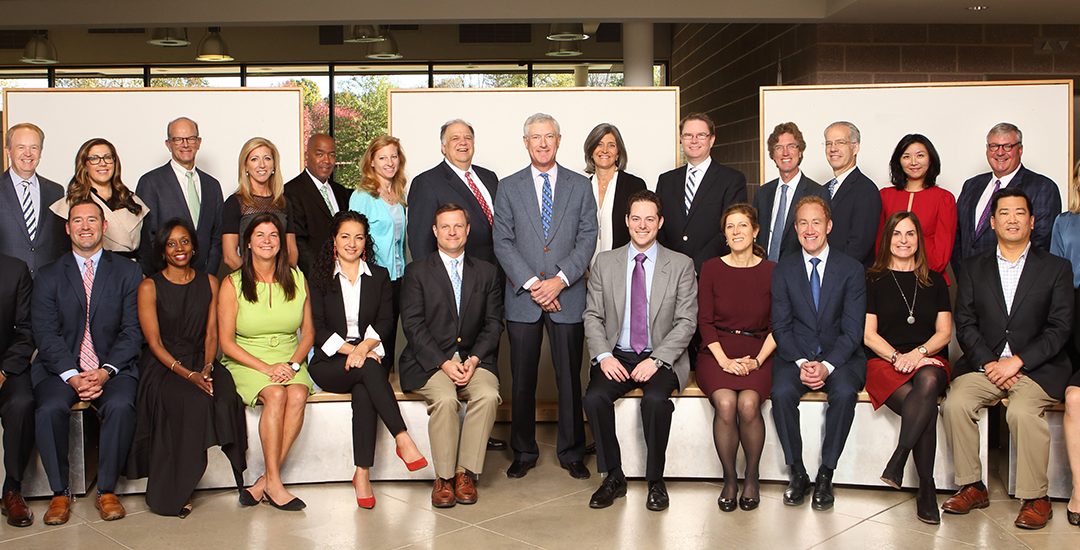
Nov 10, 2018 | Featured, School News
By Avidan Shah ’21
Pingry’s headmaster, Mr. Nathaniel Conard, announced his resignation this past June after a 13-year tenure. Headmaster Conard has made leaps and bounds towards improving our school and the quality of life for Pingry students, one of his greatest achievements being the extremely successful Blueprint for the Future campaign, which raised a record 75 million dollars.
With his departure, Pingry has launched a full-scale search for its next headmaster. The search is currently spearheaded by a committee comprised of Board of Trustees members Stuart Lederman, Katharine Wyman Procter, Arlyn Davich, Jeffrey Edwards, Denise Grant, Dev Ittycheria, and Steven Lipper. Mr. Lederman and Mrs. Procter are co-chairing this committee.
In terms of seeking out prospective candidates, it is a multi-step process. The executive search and leadership consulting firm Spencer Stuart has been hired by the committee to aid Pingry in its search. Upper School Director Ananya Chatterji explains why this firm was hired, saying that, “They identify great candidates. The search firm’s job is to identify who the best people would be [for a position].”
The firm will factor in many different variables when looking for a new headmaster, including the results from the survey that was sent out to all students. This survey asked students what qualities they expected from the next headmaster, as well as what skills they have developed the most while at Pingry and what resources they have utilized the most. The firm also took private meetings with members of the Honor Board and the senior Student Government to have conversations about what they would like to see change in the school as student leaders.
Naturally, the firm has many connections and contacts with potential candidates at different schools. They are in contact with people whom they believe would be viable options for the job. Spencer Stuart has also put together a position description where candidates can reach out to the firm and apply themselves, rather than being contacted by the firm. The firm is currently still compiling its list; once it is complete, they will present the Search Committee with their final portfolio of potential candidates whom the school will then interview.
When asked if any candidates at Pingry were being considered for the position, Dean Chatterji explains, “Spencer Stuart does what is called a ‘closed search’, meaning they do not publicize the names of the candidates that are in the pool.” With that said, candidates from within Pingry is a possibility.
After rounds of interviews, the entire Board of Trustees will make the final decision, advised by the Search Committee. This arduous process will be complete by the end of the school year. At that point, the final choice for the Head of School will be publicized to the student body, faculty, and staff.
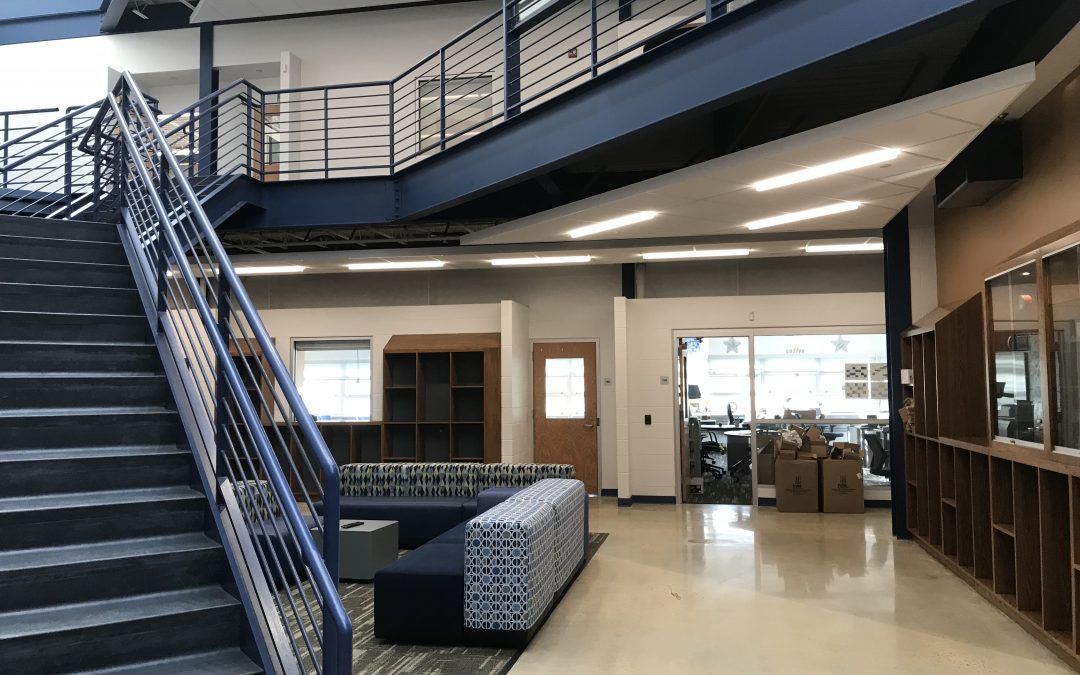
Nov 9, 2018 | Featured, School News
By Zach Trichas ’19
With the start of the new school year, Pingry’s physics wing has been completely redone. The first floor of the wing now offers a collaborative area, with wall-mounted desks underneath the stairs. Unlike the previous stairwell, the new stairs are positioned in order to streamline traffic in the area. These stairs are wider and allow more students to be on it at one time. Next to the stairs, an elevator is currently being built.
Inside the classrooms, there have been a number of changes. Everything, including the walls, desks, chairs, and equipment have been renovated. The classic black chairs that were seen around the physics wing have been replaced by newer blue chairs that offer more flexibility. The rooms have also been restocked with new cutting-edge equipment, which will be used for labs and demonstrations. The older equipment has been moved to the hallway, where it has been placed inside glass cabinets. These now serve as mementos of Pingry’s past.
Other major changes in the physics wing include the office spaces. Before, a majority of the physics teachers were in a single room, while Mr. Drew Burns, Mrs. Jill Law, and Mr. Graham Touhey were in a smaller office that required students to walk through a classroom to get to them. Mrs. Law loves the new changes, remarking that the space “feels open and collaborative.” Now, the offices are spread out on two seperate levels. The office on the second floor also has a new meeting room, similar to the one in the biology wing.
Returning students may also find that the English room on the second floor has been turned into a science room. Previously, this room was used by Dr. Susan Dineen, who retired last year. The room has a plethora of tools, including diagrams and models of the human body and various geological samples. These samples are for the recently added Advanced Geoscience course. The course is divided into two semesters, with one focusing on climate change and atmospheric disasters and the other focusing on tectonic disasters.
The renovations for the physics wing have been well received, with students appreciating how flexible the new space is. “I honestly think the new physics wing is great,” said Evan Taylor (VI). “It feels like there’s a lot more space, and it feels really modern.” The new community spaces and flexible classrooms promote collaboration, and are a welcome addition to the school.
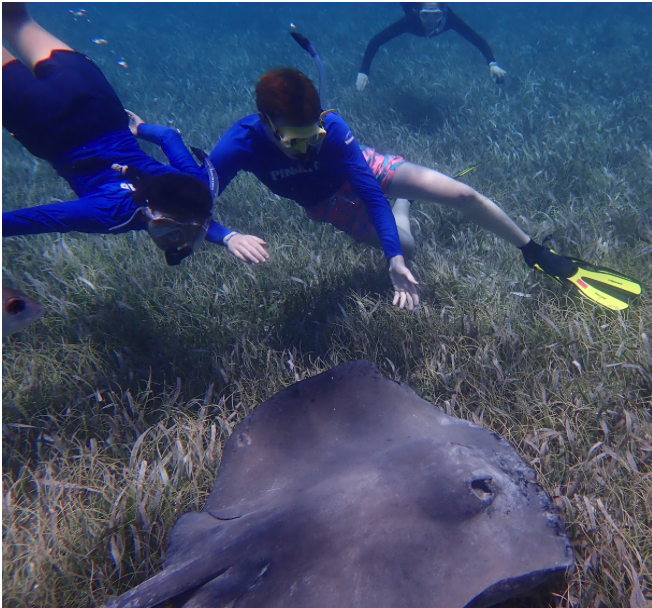
Nov 9, 2018 | Featured, Summer Experiences
By Grace Wang ’21
I took the trip of my life this summer nowhere other than Belize. Making some of my best friends and experiencing nature in an unmatchable environment, the trip changed my life and gave me an opportunity to experience life to the fullest.
I can still envision the sun’s rays peeking through the clearest water I have ever seen. I can still taste the sea on the tip of my tongue. I still feel the water flowing through my fingers. When my eyes are closed and I lay in bed at night I can still imagine myself on the Goliath rocking up and down. Everyone on that boat and I have an everlasting connection because, in our hearts, we’re still on the boat together. I can still sense everything so clearly, though putting these senses into words can’t capture the essence of the trip.
Being underwater, especially in a reef, is a surreal experience. The salt lifts you up and carries you through the water. Life below water and on land are two different universes. The dichotomy between them is what made each of them so special.
On land, we were in our universe. On land, everything is centralized around people. Everything about land has been tweaked and changed to conform to us.
Being underwater for hours at a time introduced me to so much more than just the ocean. When we were underwater, we were on a different planet. The ocean doesn’t change for us; we have to change for the ocean. Seeing all the different species of fish, coral, eel, shellfish, turtles, stingrays, manatees, and sharks, it was clear that for the first time in our lives, we weren’t the center of nature. The ocean is not for us, the ocean is for everything.
In the waters of Belize, it’s important to preserve the reef. We learned to appreciate and understand that humans can’t disturb an environment that isn’t ours. As a group, we worked with Belize TREC on a research project in order to discover whether preserving the waters of Belize truly benefits the species of underwater life. As we researched, we not only uncovered more about the reefs of Belize, we grew closer, developing into a tight-knit family.
Fellow trip-goer Carson Shilts (IV) said, “In Belize, not only was I able to experience a whole different culture, but I also made friends with people who I wouldn’t have met if I hadn’t gone to Belize. The people on the trip made it 10 times better and I cannot even explain how glad I am that I met them and went on that trip.”
Carolyn Coyne (IV) remarked that, “Belize was honestly the best trip I’ve ever been on. From our first time snorkeling and eating bean dip on the boat to playing UNO during our flight delay coming home, I was constantly having the time of my life. It’s hard to describe the trip in words—to really understand how amazing it was. I will be so sad if we don’t go back for ISP.”
In retrospect, I learned so many life lessons on the trip. I’ve learned to relax, to take in life and let it soak. I’ve learned to go with the flow and to not fight the current. I’ve learned to respect the environment. Most importantly, I’ve learned that I can do so much more than I thought I could do. From diving through dark caves and swimming with stingrays and sharks to friendship bracelets and inside jokes, I will never forget this experience.
When I tell people about the trip in all its beauty and complexity, it’s hard for them belize it. But, I’ll never forget the trip of my life.
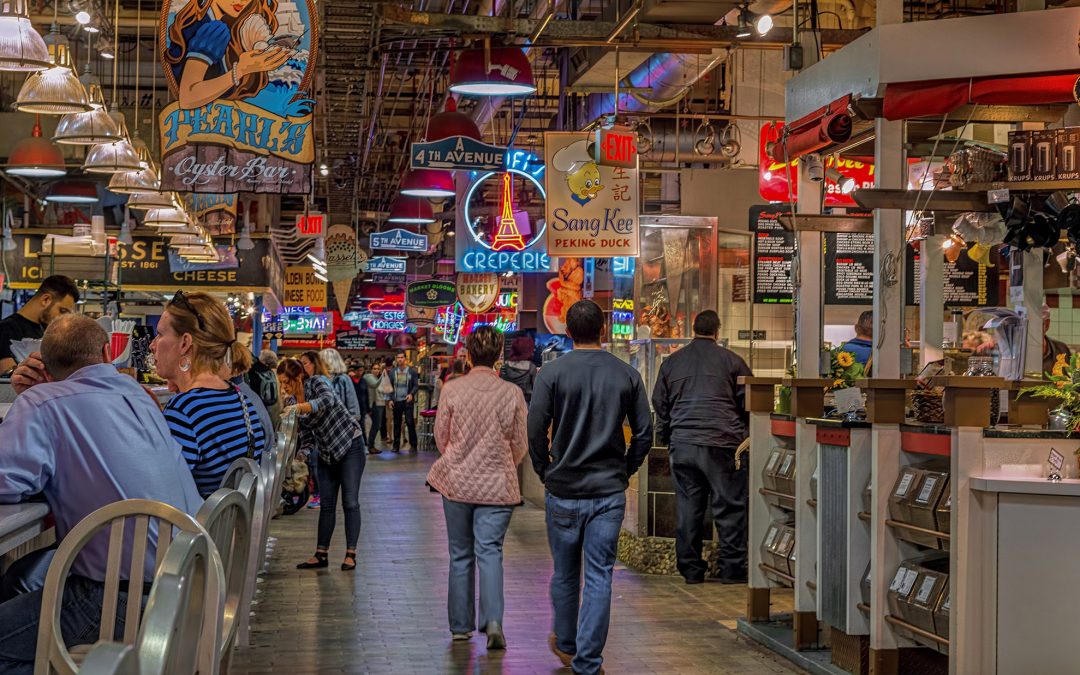
Nov 9, 2018 | Brynn Weisholtz, Featured, School Trips
By Brynn Weisholtz ’20
On a mighty first day of class trips, the junior class explored the historical sites of Philadelphia and a renowned museum.
Arriving bright and early on an unseasonably hot September morning, the junior class prepared to board coach buses and embark on a trip to Philadelphia. The students gathered in their advisory groups and, upon arriving in the City of Brotherly Love, began a grade-wide scavenger hunt.
Walking around Philadelphia on a search for historical artifacts and buildings, students rekindled friendships from last year while finding everything from jumbo-sized puzzle pieces to the famous Prince Music Theater.
Following the scavenger hunt, the students and faculty made their way to the acclaimed Reading Terminal Market. Celebrating 125 years in existence, the Reading Terminal Market is one of America’s largest and oldest public markets, offering its visitors a wide selection of produce, meats, poultry, seafood, cheeses, baked goods, and much more.
The market is not only a source of locally grown and exotic food choices – it is home to a variety of restaurants and, more importantly, is regarded as a piece of Philadelphian history that draws tourists and locals year round.
As they ate their lunch in the National Historic Landmark Building, which is home to the Reading Terminal Market, the students took some time to relax and rest after their hunt around Philly.
The final stop of the day was to visit the Philadelphia Museum of Art, where the students had an opportunity to walk the halls of the quiet museum and take in all the beautiful works, especially noting the serene water lily paintings and antique Chinese artifacts.
After a full day of touring Philadelphia and spending time learning and laughing with classmates, the students and faculty were ready to return to campus. The students’ day in Philadelphia was undoubtedly the perfect outing to kick off junior year at Pingry.









